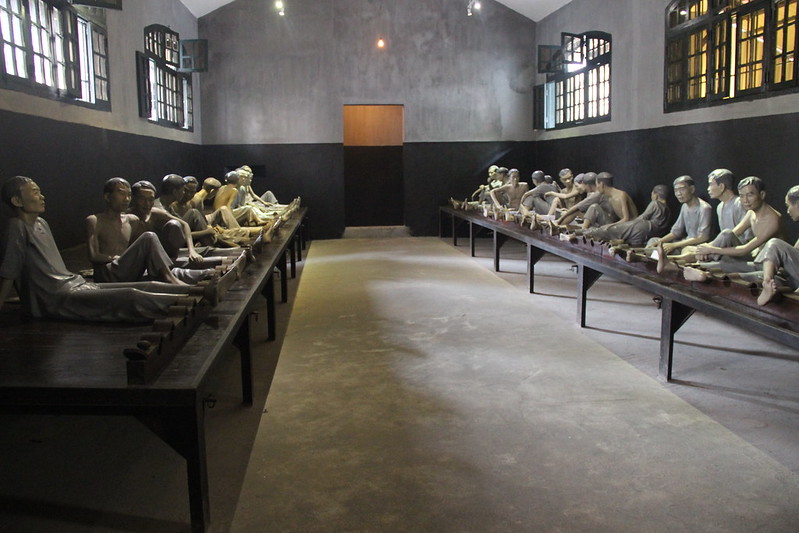Located in central Hanoi, Hoa Lo Prison was originally built by the French colonial administration in 1896 on the site of the former Phu Khanh pottery village. Designed to suppress the growing resistance movement, it quickly became one of the largest and most feared prisons in Indochina.
Thousands of Vietnamese patriots and revolutionaries were held here under brutal conditions—enduring poor sanitation, inadequate food, physical torture, and mental abuse. Despite this, many prisoners turned Hoa Lo into a "revolutionary school," where they continued to nurture their political beliefs and spread the ideals of independence. Among those imprisoned were some of Vietnam’s most influential figures, including Phan Boi Chau, Luong Van Can, Ho Tung Mau, Nguyen Luong Bang, and five General Secretaries of the Communist Party of Vietnam.
During the Vietnam War, from 1964 to 1973, Hoa Lo also served as a prison for captured American pilots shot down over North Vietnam. These prisoners famously referred to it as the "Hanoi Hilton." Notable detainees included Senator John McCain and Douglas Peterson, who later became the first U.S. Ambassador to Vietnam.
After the liberation of northern Vietnam in 1954, Hoa Lo continued to function as a prison for regular inmates. In 1993, most of the original complex was demolished to make way for urban development, but a section of the prison—located in the southeast corner—was preserved and transformed into a historical museum.
Today, Hoa Lo Prison is a powerful memorial and educational site. It stands as a solemn reminder of the courage, resilience, and sacrifice of those who fought for Vietnam’s independence and is a meaningful destination for both locals and international visitors seeking to understand the country’s turbulent past and enduring spirit.


